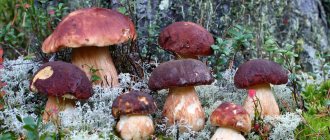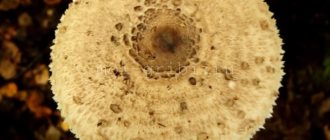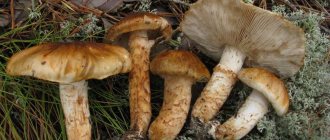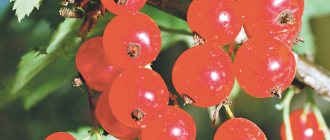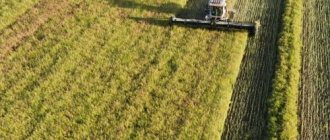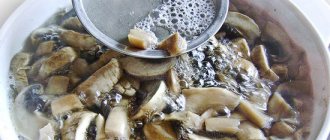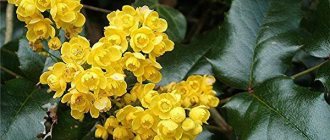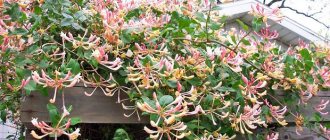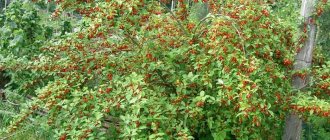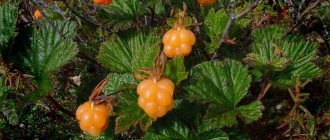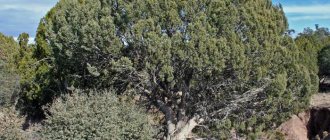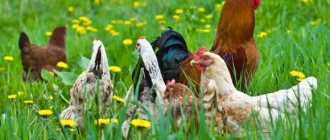What are berries?
Berries are fleshy, juicy plant fruits with a thin skin and a large content of seeds inside (the most important characteristic of the fruit type). From a scientific point of view, there is no fundamental difference between berries and fruits (for this reason, berries are often considered a type of all fruits).
Because of this, there are many common misconceptions among people. For example, it is generally accepted that berries are all fruits that can be eaten without cutting or biting (but the theory immediately collapses at the sight of tomatoes). Or that berries grow exclusively on low shrubs and trailing grasses (then what about cherries?).
Berries actually grow mainly on herbaceous or shrub plants and much less often on trees. The main characteristics that distinguish berries from other plants are: the presence of a multi-seeded fleshy fruit, a thin shell, a seed inside or seeds with a hard coating (a prerequisite).
Berry plants grow in large quantities as wild specimens, and have long been grown by humans for food consumption, use in cosmetology, perfumery, etc. The fruits are mainly valued for their nutritional qualities, rich mineral and vitamin composition, and unique taste characteristics.
What fruits can be called berries
A long time ago, when scientists decided to classify fruits, they forgot about the existence of berries. Later, the existing classification was revised. The result of this was confusion. Not many people know or understand the differences between them.
There are a couple of concepts that are fundamentally different: scientific and popular. Among the people, it is customary to call berries small, round fruits that lack a seed, have a bright color, with juicy, sweet or sweet-sour-tasting pulp. The scientific method of separation is not taken into account in this case.
In addition, the berries are picked using two fingers - the index and thumb. They are eaten whole, one at a time or in handfuls. You can collect them on bushes or find them among the grass. Rowan and bird cherry - on tree branches. Use three fingers or the palm to pick up the fruit.
According to the scientific division, it turns out that gooseberries and currants belong to the group of berries. Rose hips, strawberries, wild strawberries are false berries, cherries and cherries are classified as drupes.
Scientists have complicated everything. A plant organ formed from an ovary and containing seeds or a stone, just one, is usually called a fruit.
Fruits with juicy pulp and seeds in large quantities are called berries. Their development occurs from the ovary.
There are types:
- berries themselves - include gooseberries, cranberries, blueberries, blueberries, lingonberries, currants, grapes;
- apple - in addition to apples, this type includes pear and rowan fruits;
- pumpkin - fruits that grow on melons, zucchini, pumpkins;
- orange - this type includes citrus fruits.
Classification of berries
All berries are usually classified into several broad groups:
- Real or proper berries.
- Stone fruits.
- False.
- Berry-shaped or complex fruits.
- Poisonous.
In addition to the main classifications, many others can be distinguished. For example, all berries are divided into two broad classes: wild and cultivated, edible and inedible. It is also possible to highlight certain differences that include the shape of the fruit, their color, ripening time, etc.
In general , it is worth taking into account that even in the scientific community there is a lot of controversy about whether this or that fruit is a berry or a fruit.
For example, strawberries and wild strawberries are officially classified as berries, but there is an opinion that these fruits are generally closer in all characteristics to fruits or, in some versions, to nuts (!). Or take the same raspberries. Thanks to the pedicel, it looks more like a berry. But based on the shape of the fruit, it is classified as a multi-drupe, that is, complex fruits that are closer to fruits. By all indications, even oranges and lemons are berries, but avocados are already the most fruit.
Classification by place of growth
All berry plants can be divided into 2 groups according to their place of growth : garden, that is, grown in gardens, cultivated, and forest, that is, growing in natural conditions.
This division is arbitrary, because every gardener is an experimenter at heart. Some berries, which originally grew exclusively in forests, have successfully taken root in gardens and have become widespread in Russian dachas.
We can also distinguish a third group of berry names - those that are unable to grow in the Russian climate. But thanks to developed trade and tourism, they found their way onto the tables of Russians and were to their liking. Scientists, breeders and amateur gardeners are trying to develop varieties of their favorite exotic crops that can take root in Russian gardens.
The right berries, according to botanical definition
To some extent, fruits classified as regular berries are the most accurate from the point of view of the generally accepted botanical definition of berries.
Barberry (Berberis)
Medium and tall shrubs, some species grow to the status of short trees.
The plant has excellent heat and frost resistance and is quite unpretentious to soil composition.
It grows in warm and temperate climates, but in its natural habitat it reaches northern latitudes (in the wild it is found as far as St. Petersburg).
Humans eat berries (oblong or ovoid fruits). When fresh, they are used to make drinks, sweets, and marshmallows. Dried berries are used as seasonings for various dishes.
Belongs to the Barabariaceae family.
Elderberry (Sambucus)
Most species grow to the state of shrubs or trees, but herbaceous representatives are also found.
Elderberry is widespread throughout almost the entire globe, covering mainly the temperate zone.
It is used widely by humans: from the production of medicines to consumption in food (drinks, flavoring additives).
Belongs to the Adoxaceae family.
Grapes (Vitis)
Grapes are herbaceous plants and shrub species, among which cultivated grapes are of greatest importance to humans.
Its berries serve humans primarily for the production of wine and other drinks based on it.
THIS IS INTERESTING: up to 80-90% of the world's grapes are processed into wine, and only no more than 10% are consumed freshly picked.
Grape fruits are very rich in vitamins A, C, group B, mineral compounds of potassium, calcium, magnesium.
Botanically, it belongs to the Grape family.
Honeysuckle (Lonicera)
The plant is an erect or climbing shrub, found in the wild from the foot of the Himalayas to the northern regions of Eurasia and America.
The oblong fruits are eaten, although this plant has poisonous varieties. For example, the common honeysuckle, which grows in central Russia, is dangerous for animals and humans due to the toxic juice in the berries, trunk and leaves.
Belongs to the Honeysuckle plant family.
Viburnum (Viburnum)
It is a tall shrub or deciduous tree, sometimes growing up to 4 meters in height.
The bright red berries of viburnum can be used for food and for making medicines (mainly according to folk recipes).
The medicinal qualities of young shoots, leaves and bark of viburnum are also widely known.
Today the plant is equally used both as a fruit crop and as a decorative growing tree.
It belongs to the Adoxaceae family (previously - to the Honeysuckle family).
Gooseberry (Ribes uva-crispa)
Small shrubby plants that grow in the wild mainly on rocky and mineral-poor soils on mountain slopes.
Widely distributed throughout the world from Western Europe and North Africa. Today it grows in most of Eurasia, America, and Africa.
In agriculture, it is grown for its berries - oblong oval fruits with a pronounced sour or sweet-sour taste. Easily spreads from a cultivated environment into the wild - it goes wild. Gooseberries are eaten by humans. The berries are eaten fresh and also used to make jam, marmalade, compote, marmalade and wine.
BY THE WAY! Gooseberries are an excellent honey plant, as they are the earliest berry crop.
Belongs to the Gooseberry plant family.
Mahonia aquifolium (Oregon Grape)
Evergreen shrubs native to America. Due to its numerous root shoots, it often forms entire thickets around itself.
Interestingly, in historical places where it grows, Mahonia is valued for the medicinal qualities of its berries, leaves, and bark (in particular, it helps with skin diseases). And in Northern Europe, where it was brought by humans, it is used as an ornamental plant to decorate paths and form hedges.
Belongs to the Barberry family.
Sea buckthorn (Hippophae)
Shrub or woody plants with a thorny trunk, growing up to 6 meters in height. There are both wild varieties (in Russia it is very common in Siberia) and cultivated varieties.
Sea buckthorn fruits are spherical or elongated drupes of orange or reddish color, which form in a dense layer on the trunk of the plant (hence the name of the tree). They are used as food and are valued for their rich mineral and vitamin composition.
People use sea buckthorn berries to prevent the development of senile dementia.
Sea buckthorn is a representative of the Sucker family.
Podophyllum
A small herbaceous plant up to 40 cm tall, found in the eastern regions of North America.
Not all bushes bear fruit, but if the plant fades, then it will bear no more than one fruit - a yellowish, egg-shaped berry.
The berries can be used as food, but in moderation, as they contain a lot of podophyllin resin, which can cause vomiting, diarrhea, and digestive disorders.
Classified as a member of the Barberry family.
Tomato (Solanum lycopersicum)
They are annual or perennial herbaceous plants that are grown by humans on all continents except Antarctica. Tomatoes are valued for their fruits, which are eaten fresh, pickled, baked, fried, or stewed.
REFERENCE. Tomatoes are grown by humans as a vegetable crop. Although, from a botanical point of view, this plant bears fruit with berries.
Belongs to the Solanaceae family.
Currant (Ribes)
One of the most common garden crops grown by humans almost everywhere around the globe (except in the tropics, deserts and tundra).
In addition to wild varieties, there are at least 190 species, including hybrid currant varieties. May differ in fruits: black (ancestor of species), red, white, yellow, green. It is valued primarily for the taste and beneficial qualities of the berries (it is even ahead of some citrus fruits in terms of vitamin C). But currant leaves are also used in cooking, valuable for their aromas due to the abundance of essential resins they contain.
In growing tactics for currants, the quality of the soil plays a role, however, in terms of resistance to cold, the plant noticeably outperforms many other garden crops cultivated by humans.
Currants are classified as members of the Gooseberry family.
Rosehip (Rosa)
Subshrubs and low shrubs, reaching a height or length of 8-10 m due to climbing branching shoots.
On average, Rosehip grows up to 50 years, but there are cases of discovering 400 and 500-year-old plants.
The oldest one today grows in Germany and is about 1000 years old!
The flowering of Rosehip in forests has long been noticed by people because of its special aromas. According to legend, these smells indicate the coming of summer.
Rose hips are valuable for their fruits. They are used to make teas, tinctures, and jams. The berries are especially rich in vitamin C (in some varieties its concentration reaches up to 7-20% of the weight of the fruit).
It belongs to the Rosaceae family. In most sources it also appears as “Wild Rose”.
Edible wild berries: photo
Wild fruits are highly valued when used for medicinal purposes and in nutrition.
Wild berries contain many useful macro- and microelements, vitamins, and other biologically active substances. Therefore, wild fruits are highly valued when used for medicinal purposes and in nutrition. You can collect wild berries from early summer until late autumn, right up to the appearance of the first snow cover.
Barberry
Small red, sweet and sour berries of barberry are not only edible, but also incredibly healthy. They grow on a thorny bush, which reaches a height of no more than 2 m. The trunk of the bush is covered with brown or brown-gray bark. The shape of the leaf blade can be spherical or ovoid. Fruits can also be elongated ovoid or more rounded spherical. The length of the berries varies from 0.8 to 1.2 cm.
The barberry shrub is found both in the wild and in cultivation. Grows in Southern and Central Europe, North America, Persia, Northern Russia, the Caucasus, Siberia, Central Asia and Crimea.
The fruits on the bush ripen in the fall, and it is best to start harvesting around mid-September - early October.
After frost, the berries become more palatable. The composition of these berries is truly impressive : they contain vitamins C and K, organic acids, pectins and natural sugars. Barberry is used in both folk and traditional medicine for the manufacture of various medicines. The berry is considered a fairly common seasoning in the cuisines of different nationalities; it is also used to make jams and compotes or added to tea in dried form.
Hawthorn
A lush and tall shrub that can most often be found on the edges of forests. The plant is distributed throughout the Northern Hemisphere, is unpretentious to soils and is highly resistant to frost. It has a spreading crown, the trunk is covered with cracked bark, and the foliage has a glossy shine.
Hawthorn berries look like miniature apples, and their sizes can be either tiny or quite large, depending on the variety. The color range of fruits is quite diverse: they can be yellow, red, orange or almost black.
Hawthorn berries are edible and are used both for table purposes and in folk medicine and the pharmaceutical industry.
Important! Hawthorn is successfully used in cosmetology: it helps prevent aging, improve skin quality and fight rashes.
Hawthorn fruits are collected in the middle or even late autumn - by this time they become incredibly useful . The berries contain a lot of vitamins (carotene, riboflavin, thiamine) and minerals, tannins, pectins and much more. They are good for the heart and nervous system, help combat insomnia and increase brain activity. Also, one of the undeniable advantages of hawthorn fruits is the prevention of cancer.
The berries are eaten fresh or used to prepare various preparations, ground with sugar, prepared into jams and preserves, and added to compotes.
Common lingonberry
Edible wild berries grow on miniature evergreen shrubs, the height of which rarely exceeds 30 cm. They are found in the Northern and Central parts of Russia, the Urals, the Caucasus and Siberia.
The fruits of the common lingonberry are red multi-seeded glossy berries of a spherical shape. It is harvested in late August - early September.
Important! After frost, lingonberry fruits become watery and soft, they burst at one touch, and therefore are not suitable for transportation.
Stone fruits or drupes
Another variety of fruit-bearing plants, which are classified as berries. Their difference is that they have a particularly strong peel and, as a rule, only one seed inside.
Chokeberry (Aronia melanocarpa)
A tall shrub or tree grown for the consumption of fruits rich in vitamin C and with pronounced antioxidant properties. In the Russian version it appears as chokeberry (although it is not related to the common rowan).
Aronia berries are small balls with a distinct sweet and sour flavor and astringent properties.
Belongs to the Pink family.
Acai (Euterpe oleracea)
One of the central and largest agricultural crops in Brazil and its neighboring countries. It bears fruit with small black berries, which are eaten raw or in cocktails, drinks, and national dishes. The core of the trunk is also edible.
INTERESTING. The Indians of the Amazon primarily ate Acai fruits (up to 42% of the total diet). Due to industrial berry picking, the indigenous population lost most of their traditional food and were forced to change their habits.
Acai reaches up to 20 meters in height, grows mainly along river banks and belongs to the Palm family.
Barbados cherry (Malpighia emarginata)
Trees grown in tropical climates. In the wild it is found mainly in the Caribbean. Local residents prepare drinks from the berries, replacing classic orange juices and fresh juices with them. It is known that Barbados cherries contain 65 times more vitamin C than oranges!
The plant belongs to the Malpighian family.
Goji (Lycium barbarum)
Goji berries are also popularly known as wolfberries, although it is known for certain that this is a collective and unscientific term, erroneously applied to some other wild fruits, not necessarily Wolfberry. Dereza in the form of shrubs or trees grows from China to Western Europe. It is found throughout most of Russia, often in the wild.
It is not consumed as food, but is known as a remedy with pronounced medicinal qualities.
It belongs to the Solanaceae family.
Serviceberry (Amelanchier canadensis)
Deciduous shrubs or small trees (no more than 1 m in height) that bear fruit with berries that darken to purple as they ripen.
It is used by humans for decorative purposes. In the wild, it often serves as an indispensable source of food for most bird species.
It is a member of the Pink family.
Viburnum and Viburnum (Viburnum lantana)
Large deciduous shrubs, which are also popularly called black viburnum, proud. By the end of summer, the fruits begin to ripen - black berries. Interestingly, as they ripen, they change color from green to red and then black.
Humans use Viburnum gordovina to decorate parks and gardens. In some cases, the berries are used to make ink or natural dyes.
Like the common viburnum, it belongs to the Adoxaceae family.
Carcass Tree (Celtis australis)
Large trees that begin to bloom at the same time as the leaves bloom. The first fruiting is typical only for 10-20 year old representatives of these plants.
The berries are a dark brown or black drupe. The fruit has somewhat dry but sweet pulp. It can be eaten, although it is generally not cultivated by humans and grows in the wild.
Representative of the Hemp family.
Persimmon (Diospyros)
It may seem surprising, but persimmons also bear fruit with fleshy berries rich in vitamin C (up to 55% of the daily intake in one fruit). In addition, these shrubs and trees are valuable to humans in terms of timber. Some varieties are the source of rare species of so-called ebony.
Persimmon grows mainly in the warm countries of the Asian continent and, probably, it was from there that it spread to other parts of the planet.
Belongs to the Ebony family.
Bird cherry
Low trees and shrubs growing from the south to the northern regions of Eurasia. It is used by humans everywhere: in perfumery, medicine, woodworking, food, and as a decorative decoration. Bird cherry bears fruit in small black drupes, which are also used in cooking as a natural, permanent dye.
It is a member of the Pink family.
Emleria
These shrubs or trees grow in North America, in its western part. Mature plants can reach 7 meters in height.
The formed fruits are pronounced drupes of a dark blue color (at the moment of maturity). They are harmless to humans, but are practically not used as food due to their bitter taste.
Represents the Pink family.
What is the name of the elongated berry on the bushes?
It is quite difficult to answer this question, since there are many cultures that fit this description. Most often in our latitudes you can find the following fruits:
- honeysuckle;
- barberry;
- bird cherry;
- wolfberry
In addition to edible plants, you may encounter poison buckthorn or wolfberry, which also fall under this description. You can photograph the plant, note its characteristics and growing conditions, and then try to accurately identify the variety.
Interesting! Plants can be distinguished by the shape, color and other characteristics of the leaves. For example, dereza has small leaves, similar to willow leaves, and wolfberry has large, openwork leaves, which are a little reminiscent of maple leaves.
False berries
Another name is suprapistal berries. The fundamental difference between this classification is the formation of fruits from the lower ovary, while in regular (real) berries, fruiting occurs in the superior ovary.
Lingonberry (Vaccinium)
This evergreen shrub, as a rule, does not grow more than 20-30 cm in height, and is poorly distributed throughout the world, occupying hard-to-reach tundra, swampy areas, and northern forests. Basically, lingonberries serve as food for many birds.
INTERESTING. Lingonberry seeds are not digested in the stomachs of birds and are thus spread over long distances.
However, lingonberries are grown in agriculture. It is noted that with human care, the plant’s productivity increases 20-30 times compared to wild conditions.
Lingonberries are listed in the Heather family.
Crowberry (Empetrum)
Found in the northern regions (even in the subarctic zone), as well as in South America, low-growing creeping herbaceous plants are used by humans mainly to decorate lawns and parks. Animals eat it. One of the names for crowberry is bear berry.
It bears fruit with berries with a high content of fresh water and a minimal amount of pulp (probably hence the name). Therefore, the fruits relieve thirst well, but are not nutritious. They are used in many recipes of the peoples of the north.
Crowberry is a member of the Ericaceae family.
Cranberry (Oxycoccus)
Flowering, creeping plants that grow in swamps in the temperate zone and further north. The berries have a bright red color, stand out against the background of the sparse plant environment of northern nature, and are edible in all species and genera.
The fruits are used in cooking: both fresh and in the form of jam, compotes, tinctures, etc. Due to its rich beneficial properties and unique taste characteristics, cranberries are actively cultivated and grown for human needs.
Belongs to the Heather family.
Bearberry (Arctostaphylos uva-ursi)
It grows in wooded areas and is practically not found in central Russia. But it grows in abundance in the Caucasus, Siberia, the Far East, northern Eurasia and North America.
Basically, bearberry serves as food for wild animals. Since ancient times, humans have used this bright red berry for tanning leather and fur and preparing medicines based on it.
Bearberry belongs to the Ericaceae family.
Blueberry (Vaccinium myrtillus)
Low-growing shrubs that grow mainly in the northern regions of the planet, even reaching tundra areas. In the middle zone they grow up to 50 cm in height. The further north you go, the smaller the bushes are, up to several centimeters in height.
Blueberry fruits, as well as its leaves, are valuable for humans, both from the point of view of food consumption and medicinal use. It is believed that blueberries help restore vision due to the large amount of vitamin A in their composition.
Blueberries belong to the Ericaceae family.
Juniper (Juniperus)
Evergreen shrubs or trees, widespread from Arctic regions to the subtropical zone of the Earth. Basically, it grows within a single ecosystem: in mountains, forests, swamps.
Berries (more correctly, cone berries) are dense boxes with scales that ripen in the second year of the plant’s life. They are highly valued for their medicinal properties.
Representative of the Cypress family.
Signs of poisoning
You need to study the description with the photo and the names of the poisonous berries, so that one day you don’t try them through carelessness. All of them contain toxic components, which, when entering the body, lead to intoxication of the entire body.
Common symptoms of poisoning include:
- weakness;
- nausea, vomiting;
- bowel dysfunction;
- dizziness;
- severe headaches;
- lack of appetite;
- confusion.
The set of symptoms is individual. The patient may have one symptom or all at once.
When the condition is neglected, a person begins to have convulsions. Breathing problems begin. The patient may lose consciousness. If left untreated, the condition will be fatal.
Plants with berry-like fruits
For this class of plants, it is more accurate to call fruits not berries, but infructescences. However, they are still closer to berries, although they have fundamentally different ripening mechanisms. Thus, in most representatives, infructescences are formed not from one ovary (like regular berries), but grow together from several flowers at once.
Boysenberry (Rubus idaeus)
Another very popular name for this bush plant is ezhemalina. The fact is that it is a hybrid of raspberries, blackberries and loganberries. Large fruits ripen on the plant (up to 10 grams of weight), which makes the crop valuable for cultivation by humans. Another strong quality is the pronounced sweet taste.
Boysenberries are used to make desserts, creams, and snacks. Some varieties have found their application in cosmetology.
Represents the Pink family, like raspberries.
Cerinthe
Herbaceous plants with a short stem, which presumably spread from the territory of modern China. The nuts that ripen on it (after all, not berries) can be eaten.
INTERESTING. Cerinthe's Latin name roughly means "attractor of bees."
Representative of the Borachnikov family.
Blackberry (Rubus subgen)
It is a bushy plant with dark purple or black fruits and berries. In warm climates (for example, in the Caucasus), wild Blackberry grows very strongly, sometimes forming impassable jungle for tens and hundreds of meters.
The plant is actively grown by humans and is mainly used for preparing dishes, desserts, wines and fruit and berry teas.
Blackberries are a classic member of the Rosaceae family.
Strawberry (Fragaria) and Strawberry (Fragaria x ananassa)
Strawberry is a herbaceous creeping plant that grows in the wild. It bears fruit with small false berries—multiple berries.
The most famous variety of cultivated strawberry is the strawberry. The correct name for this garden crop is pineapple strawberry, but in colloquial speech the name “strawberry” has taken root. It is valued by humans for its fruits, called berries, although the fruits of the crop are nuts growing on the surface of the berries. Strawberries are rich in carbohydrates and vitamin C.
Thanks to the appearance of numerous hybrids, it is grown up to the northern regions of the world, as well as in the tropics and subtropics.
They are assigned to the Pink family.
Loganberry (Rubus x loganobaccus)
One of the most famous hybrids obtained by crossing raspberries and blackberries. However, it is grown quite rarely, as it does not have a good taste and the ability to be stored for a long time. For this reason, Logan berry (named after the breeder) rather served as a starting point for the creation of subsequent hybrids.
Belongs to the Pink family.
Raspberry (Rubus idaeus)
One of the most common garden crops cultivated by humans on all continents except Antarctica. Raspberries are best suited to a temperate climate with warm but not hot summers and snowy winters.
Raspberry is a shrub with a perennial root (lives up to 10 years, and shoots change every 2 years). The most valuable fruits are the drupes. They are very widely used in cooking, as well as cosmetology and medicine.
Represents the Pink family.
Cloudberry (Rubus chamaemorus)
Cloudberry is a very common herbaceous northern plant. Basically, it is not found south of 55° north latitude, but in exceptional cases it is found up to the 45th parallel.
Cloudberries are suitable for human consumption, and the indigenous peoples of the north constantly include them in their diet. The fruits are rich in vitamin C and are very similar in shape to raspberries (which is why cloudberries are often called “Arctic raspberries”).
Belongs to the Pink family.
Mulberry (Morus)
The mulberry or mulberry tree is a deciduous tree growing in the tropical zone and in the temperate south. In youth, the mulberry grows extremely quickly, but over the years it significantly slows down its growth, which is why it rarely exceeds 10-15 m in height.
The fruits – achenes or infructescences – grow up to 2-3 cm and can be eaten. In some species they are sweet, in most others they are bland.
It is a representative of the Mulberry family.
First aid
If poisoning with poisonous berries does occur, measures should be taken immediately.
- First, you need to do gastric lavage. Drink half a liter of boiled water and induce vomiting by pressing two fingers on the root of the tongue.
- After cleansing, drink activated charcoal.
- If you have a fever, apply ice and take an antipyretic.
- After vomiting, it is necessary to replace fluid loss. Therefore, drink 2-3 liters of water, alternating boiled water with a weak saline solution.
While walking in the forest, you can easily come across a whole clearing with berries, and all of them, of course, will look appetizing and attract you with the bright colors of the fruits. It’s better to play it safe and don’t try berries you don’t know. This way you will avoid serious health problems.
Author of the publication
offline 2 years
Nika
7
I am interested in hiking and traveling, photography and videography. I have been going hiking since childhood. The whole family went and went - sometimes to the sea, then to the river, to the lake, to the forest. There was a time when we spent a whole month in the forest. We lived in tents and cooked over fires. This is probably why I am still drawn to the forest and, in general, to nature. I travel regularly. About three trips a year for 10-15 days and many 2 and 3 day hikes.
Comments: 0Publications: 668Registration: 10/23/2018
Nika Nutrition in the wild
Poisonous berries
There are plants on Earth that bear poisonous berries or berry-like fruits. They should not be eaten as they can cause poisoning or even be fatal.
Daphne
Shrub up to 1.5 m tall, with a small number of branches and no leaves at the bottom of the stem. It bears fruit with bright red drupes. Not only the berries are toxic (they are filled with pungent and burning juice), but also all other parts of the plant. However, the berries are sometimes used in folk medicine to prepare decoctions and compresses.
REFERENCE. You can identify the wolfberry by the fact that it is the very first to bloom among all the shrubs in the Middle Zone.
Wolfberry is a representative of the Wolfberry family.
Voronets and Voronets thick-legged (Actaea)
A perennial herbaceous plant growing in forests, swamps, and open areas. Poisonous to humans and animals due to the presence of cardiogenic toxins.
The fruits of the plant do not exceed the size of a pea, and are colored black or red (depending on the type). In ancient times, the berries were used to prepare permanent dyes for clothing.
Belongs to the Buttercup family.
Lakonos (Phytolacca)
Herbaceous, shrubby and woody plants growing in the temperate zone of the Earth on all continents except Antarctica.
The fruits are toxic to humans, although birds are known to feast on them.
Represents the Laconaceae family.
Lily of the valley (Convallaria)
Known for its flowers, the perennial herbaceous plant is completely dangerous to humans due to its sap containing convallate toxins. Lilies of the valley are grown by humans only for decorative purposes or grow independently in the wild: in forests, meadows, swamps.
According to modern classification, they belong to the Asparagus family (formerly Liliaceae).
Privet (Ligustrum)
Shrubs or small trees that are dangerous because of their black berries, which cause severe poisoning if eaten.
The plant is very widespread in Eurasia, America and some regions of Africa and Australia.
Privet belongs to the Olive family.
Nightshade (Solanum)
Small bushes or herbs that can easily be confused with cultivated varieties of the family - tomatoes.
However, Nightshade berries are extremely harmful to humans.
The homeland of Nightshade is South America, from there it was brought to all continents.
In Australia, for example, it has become a type of weed.
Like tomatoes, it belongs to the Solanaceae family.
Holly (Ilex)
Shrubs and trees native to the tropics to the northern edges of the temperate zone.
Their fruits are called berries (although it is more accurate to call them drupes).
The fruits come in different colors: yellow, orange, red, white, black.
Interestingly, the clusters of drupes may not fall off throughout the winter.
The fruits are not poisonous, but are toxic. As a cultivated plant, Holly is rare. It mainly grows in the wild.
Representative of the Holly family.
Features of the structure of the blackberry fruit
Blackberry is a subshrub of the Rosaceae family. Ripe blackberries are usually purple-black in color. In fact, this is not one berry, but many small fruits collected around one stalk and called a “juicy drupe”
The same fruit structure is found in other plants, which leads to the question “what is the name of a berry that looks like a blackberry.”
How to distinguish from blueberries?
It is not easy for an ignorant person to distinguish other edible or poisonous berries from blueberries. There are a number of characteristic signs by which its fruits can be identified:
- bushes have rigid vertical stems;
- the plant takes root on any, even poor, soil, while most representatives of the berry family need fertile soil;
- the culture is resistant to pests and diseases (some plants with poisonous fruits have this property);
- Blueberry berries are quite large (up to 1.2 cm), have a rich hue, but their juice is colorless and does not stain your hands.
Blueberries, blueberries and other edible berries can not only diversify the diet, but also help in the treatment of various diseases, boost immunity and improve well-being. Plants with poisonous fruits can cause serious harm to the body, so you shouldn’t take risks: eat only those that you are 100% sure of.
5 / 5 ( 1 voice )
Dogwood
The valuable properties of this berry fully justify the labor-intensive process of growing the berry - after planting, with proper care, the berry produces fruit only after 16 years. The taste of dogwood is similar only to dogwood. Dogwood is very popular in cooking; jam, compotes, liqueurs, wine, and lavash are made from it .
Dogwood
What beneficial properties does this berry have?
- Dogwood has anti-inflammatory, bactericidal, choleretic and diuretic effects
- A decoction of dogwood berries strengthens the immune system and tones the body
- Dogwood helps cleanse the body of harmful decay products
- With constant use, the risk of infectious and colds is reduced.
- Berry masks help heal wounds and get rid of skin inflammation
- Dogwood is used by women for weight loss . Berries stimulate the gastrointestinal tract, metabolism and remove unnecessary waste from the body.
These beneficial berries can also cause harm, as they have contraindications for consumption:
- Increased acidity
- Chronic constipation
- Insomnia
